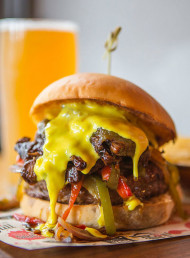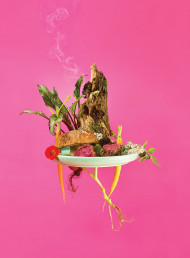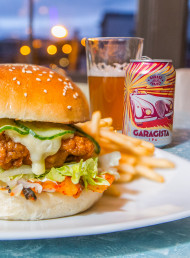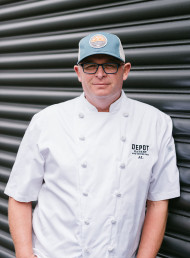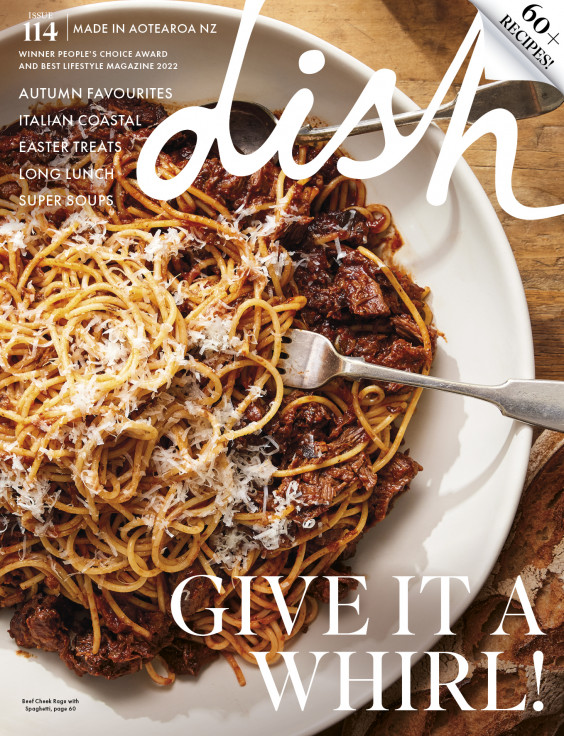Meet: Henry Hargreaves
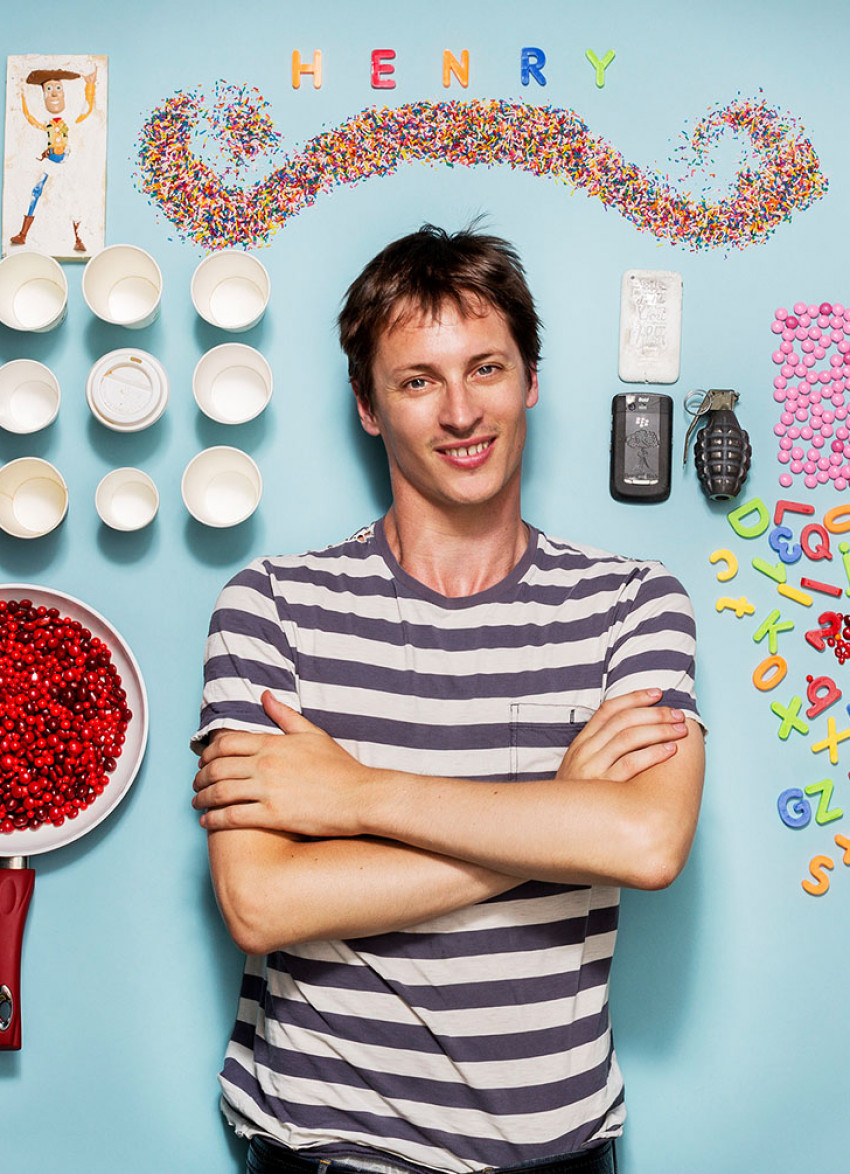
Ahead of his upcoming Visa Wellington On a Plate exhibition, Dish caught up with photographer and Brooklyn-based artist Henry Hargreaves, to discover what's so fun about playing with your food.
In 2004, Henry Hargreaves started out with grand aspirations – to shoot fashion photography. It didn't take long for the now 39-year-old to discover that sourcing a model, location, stylist and clothes for lengthy shoots could be an exhaustive process. Instead, Henry turned to the undiscovered talent down the aisles of his local supermarket.
Now, 14 years and multiple projects later, Henry is prepping for his next exhibit, Birthdays That Will Never Come, set to open on Friday, August 16 in collaboration with Visa Wellington On a Plate, a fitting addition to the events schedule, as the festival marks its 10th anniversary year.
On how the opportunity came about...
“I got asked to have an exhibition in Wellington, they wanted something that was NZ-centric, that had something to do with food. The story about New Zealand’s naming division is something that’s always stuck in my head, for me, my work always needs two elements.
One, it has to have a fun, engaging story, with a bit of education, and emotion and secondly, it’s just got to look really cool.
So, that’s how the idea of this came about it. So, I turned to the Women’s Weekly cake book. When I grew up, in the 1980s, that’s where my birthday cakes came from – so they’re very familiar to me. I kind of brought these two worlds together, with this very 80s aesthetic, celebrating kids that would never have birthdays in New Zealand.”
On shooting food with studio lighting...
“The technical side of it I’m always working on. In general, I tend to shoot in natural light when I’m trying to make something look really appetising, just because there is a much larger colour spectrum. So, if I was doing something in a restaurant, I’d always shoot it in natural light. If I’m trying to have more control over the elements, I’ll use strobes. Also, when it’s not trying to look appetising, it’s making more of a statement. That’s what I did with this series, that’s what I did with Prisoners Last Meals and MRE, the military series. The more commercial, restaurant stuff, I’ll use natural light."
On his source of inspiration...
“My cousin, Casey Moore, he’s a New Zealand photographer working out of the UK. He’s one of my heroes, you know, I’m just always trying to grow up and be like my big cousin. We recently collaborated on a series of oysters, we shot different varieties from all over the world and did them as massive big prints, that’s something to keep an eye out for. I don’t really look too much at other photography, because I tend to go down a bit of a rabbit hole of ‘I wish I did that’ as opposed to ‘that inspires me to do something very different’ but I guess Maurizio Cattelan with his Toilet Paper series, it’s really opened up the world of humour in food photography, for a lot of people. He’s a trailblazer, in that respect.”
On his favourite projects...
“Of my own work, I’d say my Mushroom Clouds: The Fall out of the Food system. A, because it was quite recent, I’m still enthusiastic about it, I haven’t seen it 1 million times. I think that was really fun, it was poignant commentary on the how the talk of nuclear war has crept back into the conversation, with the unthinkable. I think we did a really good job at executing those. The other series that’s always been a favourite of mine was the Gingerbread Art Galleries, mainly because when we did it, I didn’t expect them to be as good, both of those series exceeded expectation.
On his favourite restaurant in Wellington...
“I guess, always historically, it was always Matterhorn, like everyone else. I photographed Matterhorn for a project that I have on staff meals. I’ve since learnt that it’s closed, I haven’t been to the new spot – but I hope the magic is still there. For me, I’m also a partner in five restaurants in New York, it’s a big part of my life, going out and eating and living in places like that. What I think Matterhorn had is that special thing, anything can happen. You always expect the food to be good, but for me personally, I don’t go out just to eat, I go out to be transformed out of my daily experience, to step outside of my daily life. Anything can happen, whether it’s an interaction, a food experience, a political experience or meeting your future wife.”
On relocating to NYC...
“It was exciting, as soon as I arrived I had an immediate affinity with it. It took several years to get my visa sorted out, and I was legally able to go there. I think it’s such a warm, welcoming place, and so exciting, it’s always been great to me. I’ve had no regrets on that front.”
On playing with his food...
“When I started doing photography, in 2004, I started doing fashion. That’s the background I came from. I realised quickly it was inconvenient, you needed to find a model, a stylist, clothes, so many variables – then I realised the supermarket could be my art store and inspiration. I realised I could go there and get anything I wanted, and one of the first series I did was Prisoners’ Last Meals and I’m not a good a cook, on shoots, I usually get a food stylist in case we need to make the food look good. But for this, I realised the bar was only as high as a prison chef had set it, I knew I could exceed that. I think people, so often, people put challenges in front of themselves and it becomes too hard to do anything.”
“My universal piece of advice is just do something. I would 1000 times over, do something and find out that it doesn’t work, than sit there with an idea that I’m never executing. Just go out there and do it.”
On a Prisoners' Last Meals...
“The genesis for this was something I read, that caught my attention. I read about Texas getting rid of the last meal request, and I was curious about what people actually ordered. I went and found a Wikipedia page, the facts just stuck with me. When I actually shot them, it just haunted me, that this is what people ordered. I also never ate any of the food from that series, I’m usually very good about being sustainable and reusing, recycling. But with this series, it was almost as if food had lost its taste, it just didn’t feel right to eat it.”
To learn more about Henry Hargreaves or to view his work, see here. To learn more about Henry's upcoming Visa Wellington On a Plate exhibition, see here.
latest issue:
Issue #114
Autumn has arrived, and with it, the latest issue of dish, jam-packed with recipes that will have you fizzing to get in the kitchen! With a long Easter lunch featuring perfectly pink, blushing roast leg of lamb and wildly decadent baked mashed potatoes with caramelised onions, to simply scrumptious chocolate treats and sensational seasonal baking this issue has you covered - we reckon the Hot Cross Buns are our best yet! Salads make way for soothing soups, pies, puddings and our cover star beef cheek ragù with spaghetti – a must-make dinner for family and friends. With over 60 recipes in our latest issue there’s plenty of inspiration to keep you busy – and well-fed! Don’t forget to share your dish dishes with our Facebook community.

